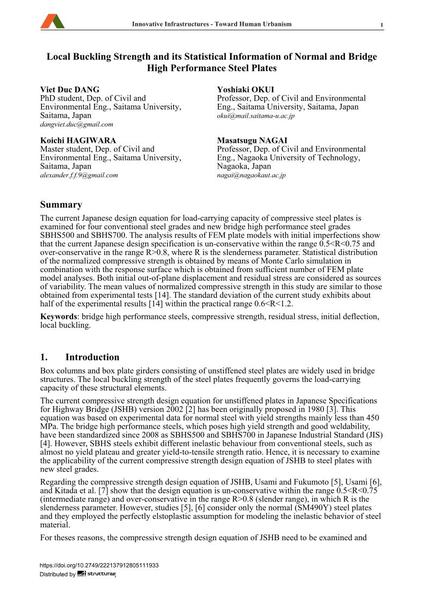Local Buckling Strength and its Statistical Information of Normal and Bridge High Performance Steel Plates

|
|
|||||||||||
Détails bibliographiques
| Auteur(s): |
Viet Duc Dang
Yoshiaki Okui Koichi Hagiwara Masatsugu Nagai |
||||
|---|---|---|---|---|---|
| Médium: | papier de conférence | ||||
| Langue(s): | anglais | ||||
| Conférence: | 18th IABSE Congress: Innovative Infrastructures – Towards Human Urbanism, Seoul, Korea, 19-21 September 2012 | ||||
| Publié dans: | IABSE Congress Seoul 2012 | ||||
|
|||||
| Page(s): | 1429-1435 | ||||
| Nombre total de pages (du PDF): | 7 | ||||
| DOI: | 10.2749/222137912805111933 | ||||
| Abstrait: |
The current Japanese design equation for load-carrying capacity of compressive steel plates is examined for four conventional steel grades and new bridge high performance steel grades SBHS500 and SBHS700. The analysis results of FEM plate models with initial imperfections show that the current Japanese design specification is un-conservative within the range 0.5<R<0.75 and over-conservative in the range R>0.8, where R is the slenderness parameter. Statistical distribution of the normalized compressive strength is obtained by means of Monte Carlo simulation in combination with the response surface which is obtained from sufficient number of FEM plate model analyses. Both initial out-of-plane displacement and residual stress are considered as sources of variability. The mean values of normalized compressive strength in this study are similar to those obtained from experimental tests [14]. The standard deviation of the current study exhibits about half of the experimental results [14] within the practical range 0.6<R<1.2. |
||||
